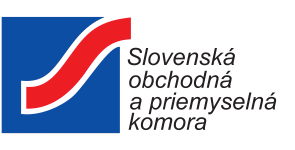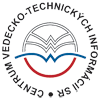Summary:
A research group from a Spanish university has developed and patented a new system and procedure for roundabout signaling and traffic control. The system is based on grouping the vehicles of each access into platoons and staggering the platoon’s arrival from orthogonal directions of roundabout access. They are looking for license or joint venture agreements.
Description:
The current roundabouts, based on the priority to the vehicles that circulate within it, provide greater security than intersections or crossings, but are quite limited, with medium and heavy traffic, due to the frequent stops of vehicles at their entrance. Major capacity and delay improvements are needed that are applicable to both conventional and autonomous vehicles. Roundabout signaling and control must evolve by integrating traditional signaling technologies and current wireless and sensor networks.
A research group specialized on networks and intelligent systems from a Spanish university has developed a synchronous rotating priorities sectors roundabouts. This system constitutes a new paradigm, different from the current signalized intersections and roundabouts, for the control of traffic in roundabouts and their vicinity. It is based on platoons of vehicles arriving at the roundabout with speed identical to the turning speed in the roundabout and within the time interval assigned to his entrance, avoiding all the conflicts of passage and with it the arrests. Basic signage is visual and light for human drivers and optionally also wireless for connected vehicles and autonomous vehicles. Capacity improvements depend on design parameters: moderate for small roundabouts, but go up to 70-100% for short distances between vehicles and medium and large roundabouts. Delays are reduced by 28.7% with much less variability, allowing better service levels (LOS) with heavy traffic.
The system can be adopted in any country in the world with the prior approval of the corresponding traffic authority. It is very suitable for improving traffic in roundabouts with heavy traffic. Its basic technology is simple (LEDs, traffic sensors, video cameras, microprocessors) but it can be extended indefinitely with state-of-the-art wireless communications such as VTX (Vehicle to everything), artificial intelligence, etc.
This vehicle access control system operates by forming compact platoons of vehicles that access the roundabout with uniform speed and simultaneously in the entrances from both directions of one direction (eg north and south) but arriving vehicles out of phase with them. The entrances orthogonal to said direction (eg east and west, orthogonal to north and south) by a distance approximately half the length of (or less than) the circumference of the roundabout in its central axis. The entry speed is standardized to a value roughly equal to that of the traffic within the round. The platoons are appropriately staggered in space and time using moving platoon head signs and sector priority turn signals. This shows the turn of the sectors and their duration in an analog way, allowing the drivers of each platoon to naturally anticipate the arrival and the duration of the priority interval of their access. The uniform speed and timing of the arrival of priority vehicles avoid many stops at the entrance of the roundabout. The incorporation of the vehicles to the roundabout can be done with a shorter distance between them and in a much safer way, since the accelerations and decelerations of the participating vehicles are very low. This result in the twisting of the platoons of vehicles from different accesses with very small relative speeds, which increases safety.
It is important to point out that not only are conflicts between vehicles to enter the roundabout minimized by means of signaling. Conflicts to exit the roundabout are avoided, because in each sector of the roundabout only vehicles with the same access circulate together, similar to what happens in a revolving access door to a building.
This new system is offered for patent rights acquisition or international licensing on a per country basis to equipment manufacturers, infrastructure companies and traffic authorities to implement solutions adapted to every specific country or situation. Possible Joint Venture agreements are contemplated in order to enter a foreign market
Type (e.g. company, R&D institution…), field of industry and Role of Partner Sought:
This system is offered for patent rights acquisition or international licensing on a per country basis to manufacturers of traffic signaling equipment, traffic consultancy offices, infrastructure construction companies, investors in intellectual property, traffic authorities (local, regional, national) and public works to implement solutions adapted to every specific country or situation. Possible Joint-Venture agreements are contemplated in order to enter a foreign market.
Stage of Development:
Under development/lab tested
IPR Status:
Patent(s) applied for but not yet granted
Comments Regarding IPR Status:
Patentability report published by patent office with no prior art objections.
External code:
TOES20201215003








